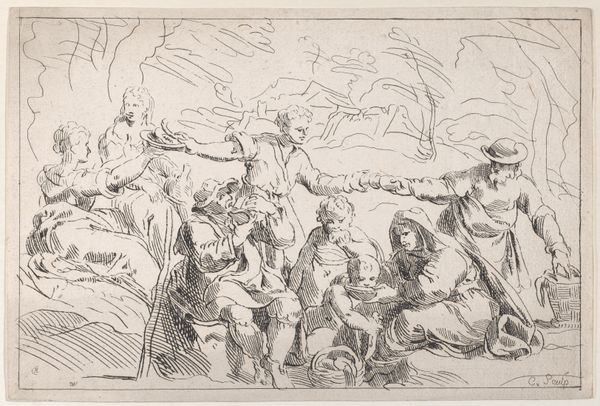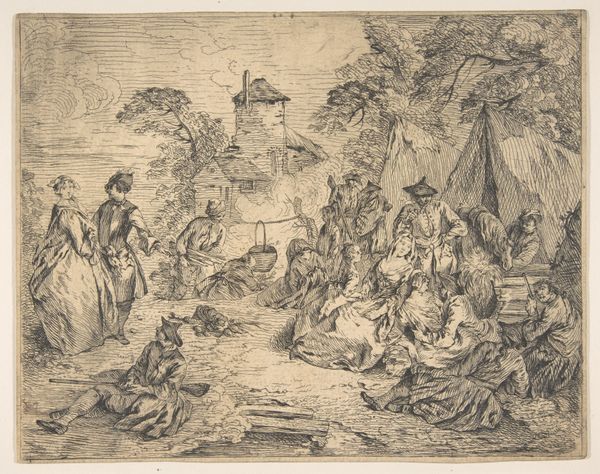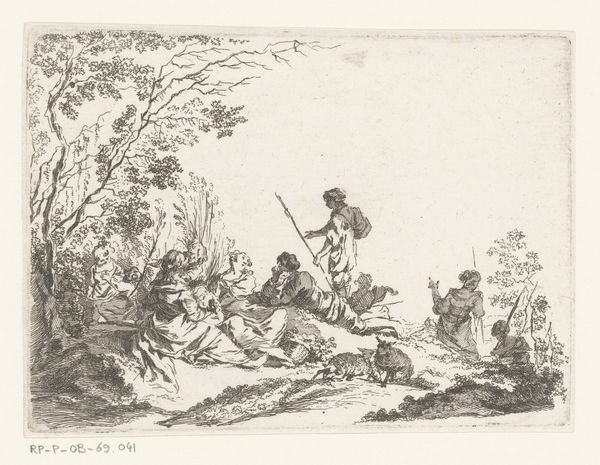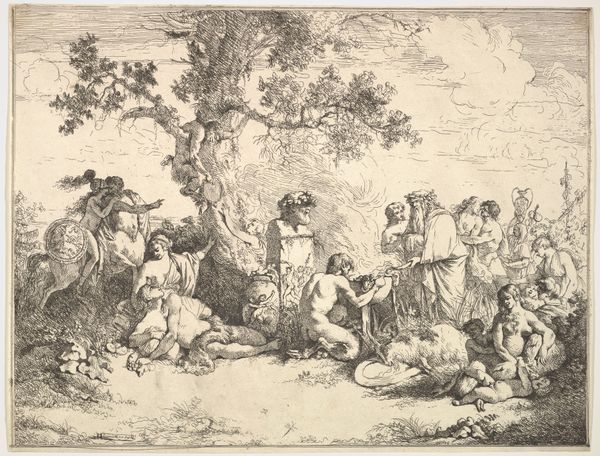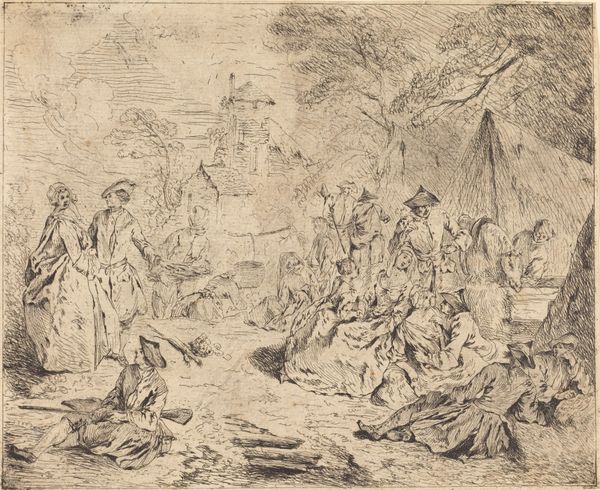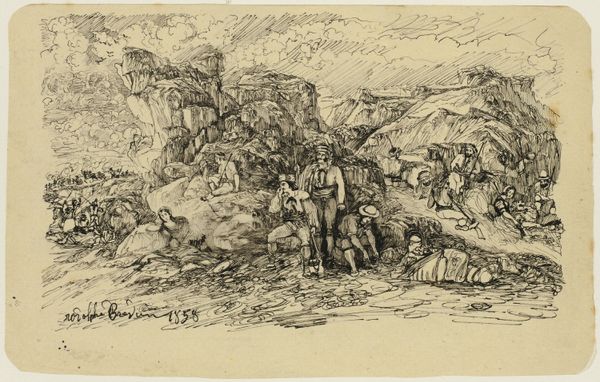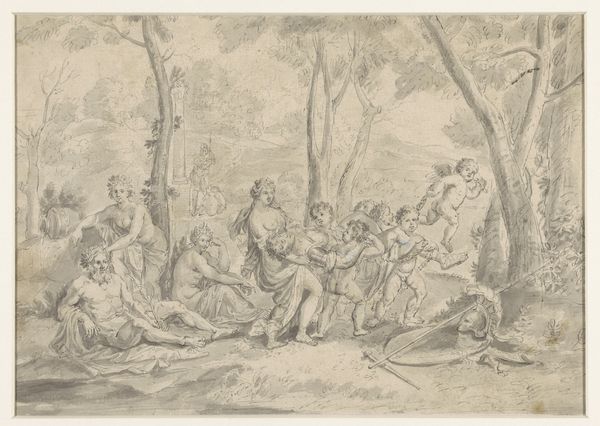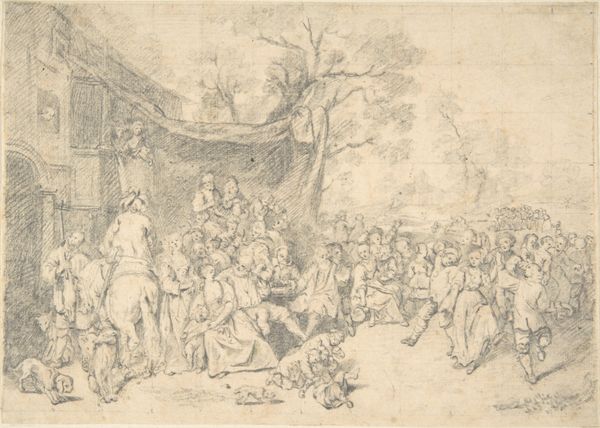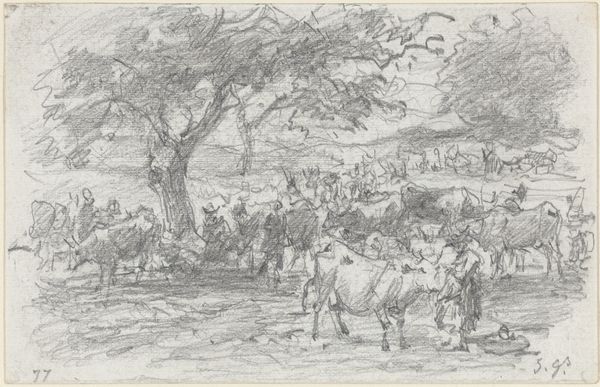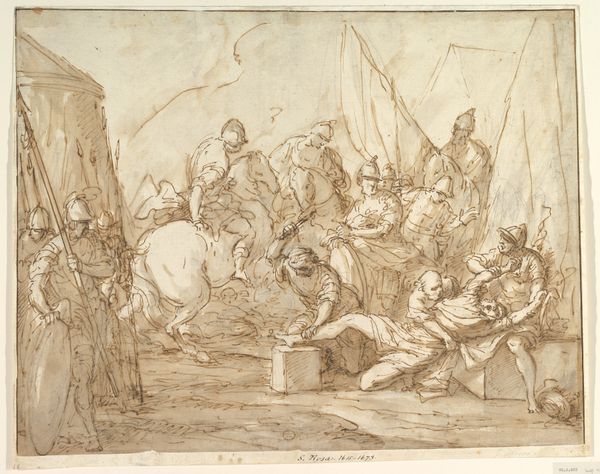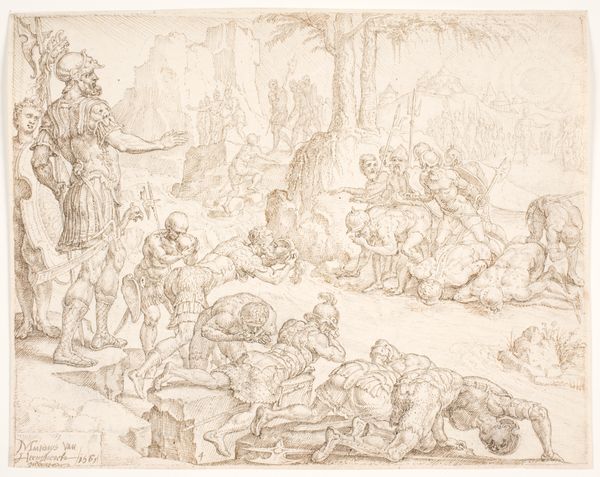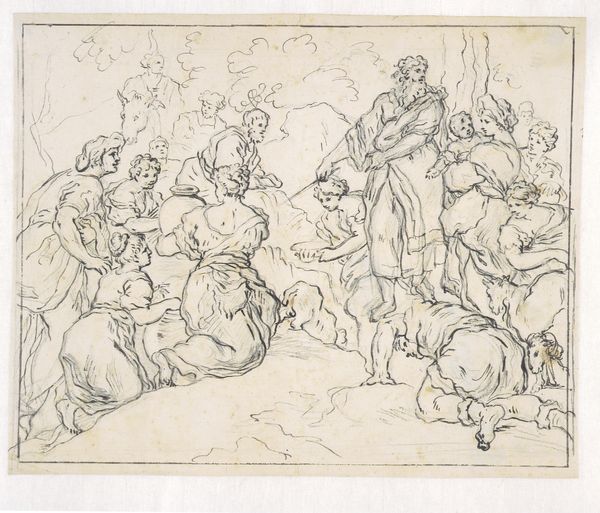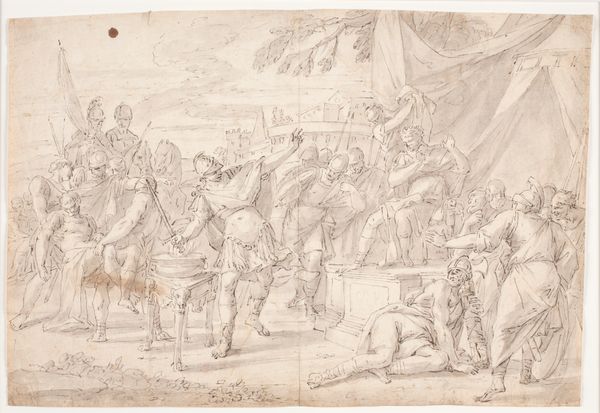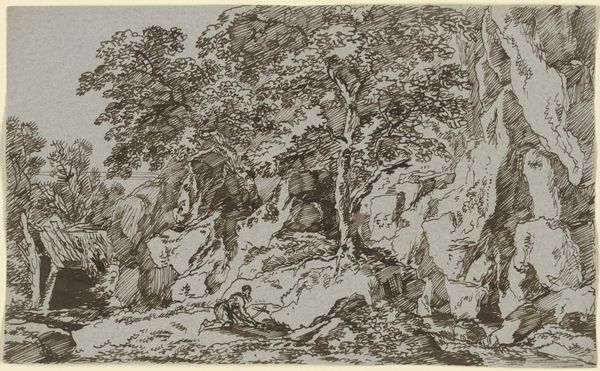
Laban searching for idols among Jacob's possessions 1630 - 1640
0:00
0:00
drawing, print, etching, ink
#
drawing
#
ink drawing
#
narrative-art
#
baroque
# print
#
etching
#
landscape
#
figuration
#
ink
#
horse
#
men
#
line
#
pen work
#
history-painting
Dimensions: sheet: 9 15/16 x 13 1/16 in. (25.3 x 33.2 cm)
Copyright: Public Domain
Editor: We're looking at Giovanni Benedetto Castiglione’s etching, "Laban searching for idols among Jacob's possessions," from around 1630 to 1640. It's incredibly detailed and has a restless, almost frantic energy to it. How do you interpret this densely packed scene? Curator: The frantic energy you perceive absolutely resonates. Consider how Castiglione uses line – notice its frantic quality – to not only define forms but to convey emotional intensity. Think about the story itself, Laban pursuing Jacob who has secretly fled with his daughters and, crucially, Laban's household idols. The idols become symbols of continuity, cultural memory. What might their theft signify? Editor: Disruption, maybe? A severing of ties to the past? Jacob's actions are pretty audacious. Curator: Precisely. And what about Laban's search? He is clearly very anxious to recover these "gods." Note how the figures are arranged – almost like a stage – inviting us into the drama. The visual density mirrors the narrative complexity. Do you notice any particular details drawing your eye? Editor: Definitely the contrast between the active searching and the passive figures, like the women sitting with children. Curator: Excellent observation! Castiglione uses this contrast to highlight gender roles and expectations. In many cultures at this time, women were associated with domesticity and piety, thus are deemed unable to "steal" idols, therefore the action of the scene surrounds them. Editor: It's amazing how much symbolic weight can be packed into one image through such careful arrangements. Curator: Indeed. And by understanding the visual symbols and the historical context, we unlock deeper layers of meaning in Castiglione's work, appreciating how visual language shapes our understanding of cultural narratives across time. Editor: I see this piece with new eyes; it's about stolen traditions and changing beliefs as much as a biblical story!
Comments
No comments
Be the first to comment and join the conversation on the ultimate creative platform.
